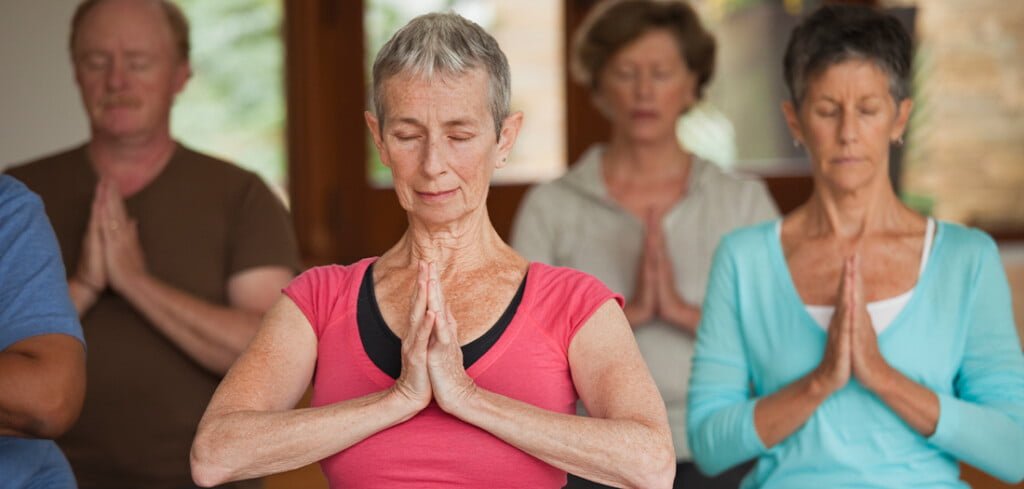Yoga has grown in popularity in the United States, with around 13.2 percent of the adult population claiming to have done yoga at some point in their life.

The most often stated motivations for practicing yoga are to maintain health and well-being, avoid disease, enhance energy levels, boost immunological function, and treat ailments such as back pain, stress, and arthritis (Cramer et al., 2016). Along with the general population, there is increasing data indicating the benefits of yoga for breast cancer survivors.
Breast cancer survivors may have adverse consequences from cancer therapy, such as decreased strength, physical function, and tiredness (Sehl et al., 2013; Simonavice et al., 2011; Stasi et al., 2003). Additionally, swelling, weakness, and discomfort in the afflicted arm (the arm on the side of the malignancy) may continue following surgery, radiation, and lymph node excision beneath the arm (Warmuth et al., 1998). These alterations may have a detrimental effect on one’s overall quality of life.
However, evidence indicates that yoga practice might help mitigate some of these treatment-related adverse effects. Following short-term yoga treatments, studies have demonstrated improvements in physical well-being (Moadel et al., 2007), tiredness (Bower et al., 2012; Moadel et al., 2007), affected arm symptoms (Andysz et al., 2014), and quality of life (Andysz et al., 2014; Culos-Reed et al., 2006). Additionally, a systematic review and meta-analysis of 13 yoga treatments in cancer patients showed that yoga improved distress and anxiety and tiredness, health-related quality of life, emotional function, and social function (Buffart et al., 2012).
Particular Attention to Postures and Class Sequencing
There is no one-size-fits-all yoga program for breast cancer patients and survivors since the yoga treatments used in the aforementioned research differed in terms of frequency, intensity, sequencing, and selected postures. Therefore, while choosing the proper frequency and intensity for your breast cancer participants, as well as picking postures, there are numerous factors to consider:
- Arm Symptoms: As a result of cancer therapies, participants may suffer discomfort, weakness, and limited range of motion in the afflicted arm, as well as the development of lymphedema, which occurs when lymph fluid accumulates in the arm (Sakorafas et al., 2006). Encourage participants to wear compression sleeves and avoid arm-painful positions. To begin, concentrate on developing upper body range of motion via moderate shoulder stretches and chest-opening postures like shoulder rolls, cactus arms, cow position, or a supported backbend. Provide adaptations for strengthening exercises that need a large proportion of body weight to be carried by the arms, such as downward-facing dog, plank, or low push-up position, until participants develop upper body strength. Progression is gradual as the range of motion, strength, and confidence in the arms develop.
- Peripheral Neuropathy is a side effect of chemotherapy that can include numbness in the hands and feet, muscular weakness, and loss of balance (Wickham, 2007). Encourage individuals with peripheral neuropathy to stand or balance on a chair or next to a wall. A chair yoga class, if available, may also help these individuals.
- Include Meditation and Breathing Exercises: Include both meditation and breathing exercises in your yoga courses and sessions, since both may help participants sleep better, manage stress and anxiety, and improve their overall quality of life.
- Include Postures for Strength and Physical Function: Because breast cancer treatments can result in a loss of strength and physical function, emphasis on postures and sequences that integrate whole-body functional motions to strengthen the core and upper and lower body. Warrior I, Warrior II, Warrior III, high lunge, goddess, downward-facing dog, and plank may all help to strengthen and function the entire body.
- Highlight the Advantages of Each Posture: Educate your participants about the general advantages of yoga and how breathing exercises, meditation, and the practice of specific postures can help alleviate treatment-related adverse effects such as muscular weakness, discomfort, decreased shoulder flexibility, tension, or anxiety. This can provide individuals with the knowledge and confidence to practice these postures at home, therefore assisting in the management of these adverse effects.
Along with the aforementioned issues, teaching yoga to cancer patients or survivors requires extra knowledge and skill. Therefore, if you are interested in teaching or implementing a cancer-specific yoga class at your institution, you should pursue further cancer-specific yoga teacher training or apply to become a Cancer Exercise Specialist via the American Council on Exercise.

